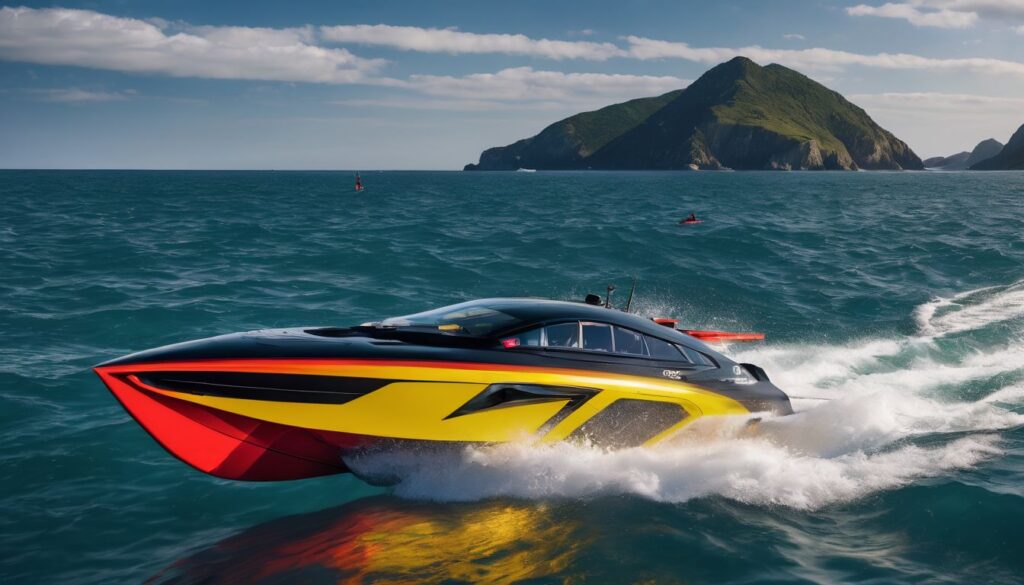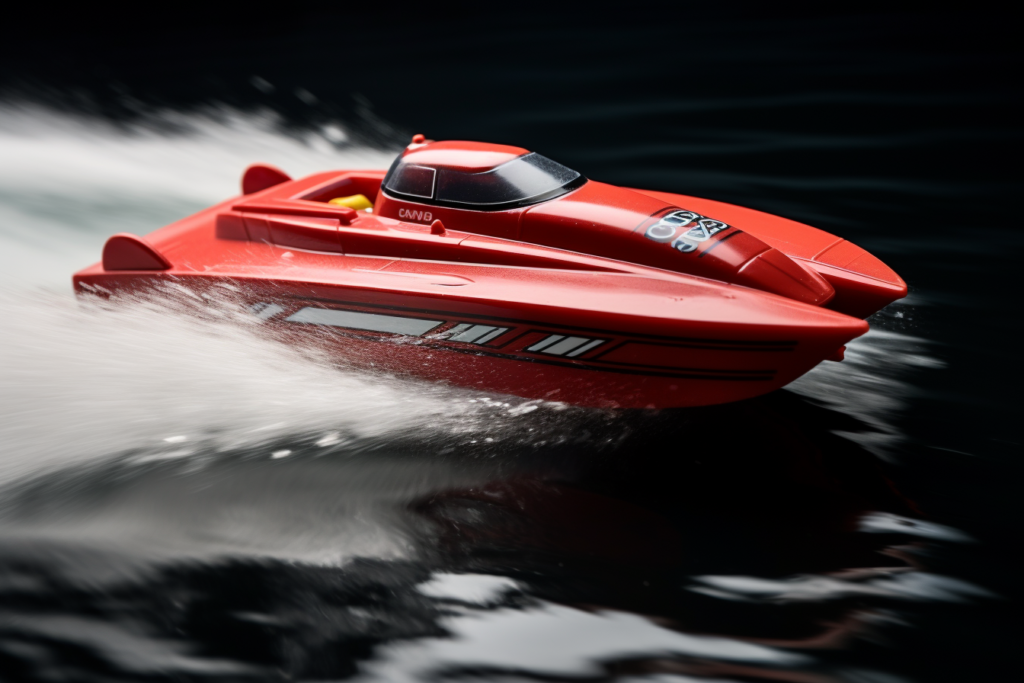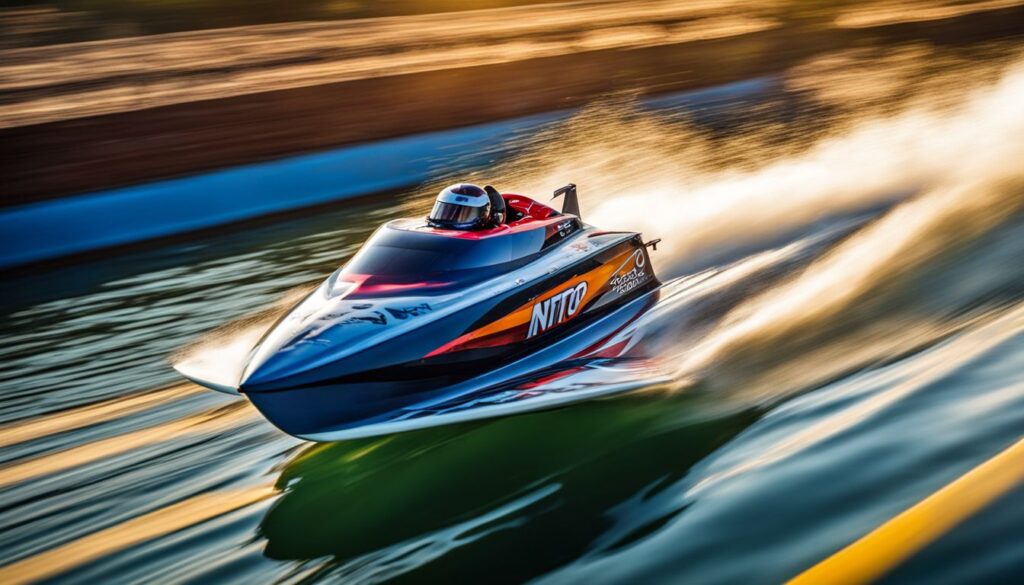How Do Remote Control Boats Work?
Please note that Books.org participates in the Amazon Services LLC Associates Program. This means that when you click on our links to Amazon.com and make a purchase, we may receive a small commission at no extra cost to you. This helps us continue to provide high-quality book recommendations and reviews. We truly appreciate your support!

Curiosity piqued by the slick slice of remote control boats across the waves? You’re not alone. When I first witnessed these miniature marvels darting through water, a mix of fascination and bewilderment washed over me.
Dive in with us as we unpack the enchanting world of RC boats – examining everything from their dynamic power systems to their nimble steering mechanics.
Prepare to embark on an enlightening voyage into the heart of these captivating vessels!
Table of Contents
- Understanding Radio-Controlled Boats
- Power Systems for RC Boats
- Steering and Control
- Tuning Tips for Optimal Performance
- Conclusion
- FAQs
Key Takeaways
- Remote control boats are powered by electric motors or nitro engines, with most hobbyists preferring electric for its simplicity and cleanliness.
- The boat is controlled by a transmitter and receiver, which are paired to send and receive radio frequency signals that control servo motors for each function of the boat.
- Steering is managed by a servo that manipulates the rudder, allowing precise control over direction in the water.
- Optimizing performance involves adjusting trim tabs and prop angle as well as ensuring regular maintenance like cleaning out the water inlet.
- Different types of RC boats include scale models, catamarans, racing hydroplanes, deep vees, and airboats – each designed for specific conditions and experiences.
- The materials used for building model boat hulls impact their durability and speed on water; popular choices include fiberglass because it’s lightweight yet tough.
- Speed is managed by a servo that controls whether the motor goes faster or slower.
Understanding Radio-Controlled Boats

When it comes to radio-controlled boats, there are different types to choose from, including race boats and sailing models. These boats are typically made with durable hull materials and come in various sizes, making them suitable for different water conditions.
Types of RC boats
I’ve always been fascinated by the variety of remote-controlled boats available. Each type offers a unique experience for both hobbyists and racers alike.
- Scale Boats: These models are miniaturized versions of full-size vessels, crafted with impressive detail to look just like real marine craft. They’re perfect for those who appreciate precision and realism in their models.
- Catamarans: With two sponsons, or hulls, catamarans have exceptional stability and can handle choppier water well. They’re designed for speed and maneuverability, making them great racing choices.
- Racing Hydroplanes: Built strictly for speed, these boats feature flat surfaces that glide over water at lightning-fast speeds. When competition is your game, a racing hydroplane is what you want to control.
- Deep Vees: Recognized by the deep ‘V’ shape of their hulls, they slice through water with ease and provide excellent handling. Deep vees are ideal when tackling rougher waves.
- Airboats: Unlike traditional RC boats that rely on submerged propellers, airboats have large fans above the water line. This unique design allows them to traverse swampy or weedy environments where others can’t go.
Materials used for hulls
Let’s talk about what goes into building the body of these nifty vessels. Fiberglass stands out as the go-to choice for constructing hulls in RC boats because it’s tough and light, which means your boat won’t just survive a few bumps and scrapes but also zip across the water with ease.
These fiberglass models are awesome since you don’t have to build them from scratch; they come ready-shaped, allowing you to jump straight into adding personal touches or assembling the upper parts.
Experimentation is also part of this hobby’s excitement, with new materials like PLA, PetG, and ABS being explored for their potential in crafting even better radio-controlled yacht hulls.
It shows that this isn’t just child’s play; serious innovation happens here! So while your boat cuts through waves at impressive speeds, remember some clever science helped get it there.
Next up: diving into how different power systems keep these RC boats moving – whether they’re gliding gracefully or racing at full throttle!
Power Systems for RC Boats

Power systems for RC boats vary from electric to nitro engines, each with its own unique way of propelling the boat through the water. Understanding how these power systems work is essential for maximizing performance and enjoyment of remote control boating.
Electric vs Nitro
As someone who’s been around the block with remote control models, I’ve seen a lot of debate over electric versus nitro boats. Let me break it down for you in a table so you can see the differences side by side.
| Feature | Electric RC Boats | Nitro RC Boats |
|---|---|---|
| Power Source | Rechargeable battery packs | High nitro fuel |
| Noise Level | Quiet operation | Loud engine noise |
| Maintenance | Low maintenance, easy to use | High maintenance, requires adjustments and tuning |
| Weight | Generally lighter | Heavier due to the engine and fuel |
| Startup | Instant start with a switch | Can be finicky to start and adjust |
| Beginner-Friendly | Yes, often included in ‘Ready to Run’ kits | No, requires a more experienced user |
| Run Time | Limited by battery life, but batteries are replaceable or rechargeable | Dependent on fuel supply but can be refueled for longer sessions |
| Environmental Impact | Cleaner, with no emissions | Produces exhaust fumes |
I’ve enjoyed the simplicity and cleanliness of electric boats, but I also know hobbyists who love the roar and challenge of a nitro engine. Now, steering and control are just as crucial as your power choice, so let’s take a look at how that works with these boats.
How they work
Electric motors are the most common type of power system for RC boats. These motors receive their energy from a battery placed onboard the boat. The motor is connected to a shaft that runs towards the front of the boat, propelling it forward through the water.
This setup allows for precise control over speed and direction, thanks to the electronic speed controllers installed within the boat.
Meanwhile, steering in an RC boat is usually controlled by a servo linked to the rudder post at the back of the boat. When I manipulate my handheld transmitter’s controls, signals are sent to this servo via a radio receiver on board, allowing me to rotate or adjust my rudder as needed.
Steering and Control
When it comes to steering and control, understanding the placement and function of the rudder is crucial. Additionally, learning about the role of servos in controlling the movement of your remote control boat will ensure smooth sailing on the water.
Rudder placement and function
Rudder placement significantly influences an RC boat’s steering response. Placing the rudder off-center can enhance the turning ability compared to positioning it directly behind the prop.
The rudder functions by altering water flow, enabling precise control of the boat’s direction. Fore and aft placements of the rudders dictate how effectively a boat steers. In essence, these components play a critical role in controlling the vessel’s trajectory and responsiveness to steering commands.
The function of an RC boat’s rudder is fundamental for maneuverability and directional control. Typically fastened outside at the stern, this crucial part facilitates precision steering through deflection of water flow.
Role of servos
Servos play a crucial role in steering and controlling the speed of remote control boats. These components act as the muscles of the hobby, converting electrical signals into precise movement.
They are motor-driven systems equipped with feedback elements, ensuring accurate control over steering and speed adjustments while navigating through water.
In remote control boats, servos are responsible for moving specific parts of the model to achieve optimal performance. By understanding their function and importance, enthusiasts can ensure that their RC boats respond swiftly and accurately to steering inputs, enhancing overall enjoyment and performance on the water.
Tuning Tips for Optimal Performance
When it comes to getting the best performance out of your remote control boat, there are a few key tuning tips you’ll want to keep in mind. From adjusting trim tabs and prop angle to ensuring regular maintenance, these tips can help ensure that your boat runs at its optimal level every time you take it out on the water.
Battery placement
Battery placement in remote control boats is crucial for optimal performance. Placing the battery low and centered in the hull can help provide stability and balance, especially in rough waters.
On the other hand, distributing the weight of the battery to the sides of the hull can enhance maneuverability by allowing for sharper turns. Carefully considering these options based on your boat’s specific design and intended use is essential for getting the most out of your RC boat.
The right placement of your battery power source not only impacts how your boat handles but also influences its speed and efficiency. Whether you opt for a monohull or deep-V hull type, where you choose to position your battery will have a direct impact on overall performance.
It’s vital to experiment with different placements to find what works best for your particular model before hitting the water.
Adjusting trim tabs and prop angle
In addition to optimizing battery placement, another crucial aspect of tuning remote control boats for peak performance involves adjusting trim tabs and prop angle. These adjustments directly impact the boat’s handling, speed, and stability on the water.
By carefully positioning trim tabs, I can fine-tune how the boat interacts with the water surface – pushing the bow down for sharper turns or stabilizing it at high speeds by lowering them.
Likewise, tweaking the prop angle affects how efficiently power is translated into propulsion while influencing the running angle of the boat in water.
Importance of regular maintenance
Regular maintenance is crucial for keeping remote control boats running smoothly throughout the season. Preventive maintenance is important to ensure optimal temperature control and prevent the growth of harmful mold.
Basic marine maintenance includes cleaning out the water inlet to prevent blockages and ensuring that trolling motor maintenance is performed to keep the motor running like new for years to come.
Conclusion
In summary, remote control boats operate using radio signals to control their movement. They come in various types and can be powered by electric motors or nitro engines. Servos play a crucial role in steering these miniature vessels, while tuning tips are essential for optimizing their performance on the water.
Overall, understanding the power systems and controls of RC boats opens up an exciting world of hobbyist activities.
FAQs
1. What makes remote control boats move?
Remote control boats move thanks to a motor inside the boat which often is a brushless motor for faster speeds or a brushed one for less expensive models.
2. How do you control a remote control boat?
You control it with a radio transmitter in your hand that sends signals to the receiver on the boat, usually over a 2.4GHz range, steering it across water.
3. Can you build your own remote-control boat?
Yes, DIY enthusiasts can create their own boats using materials like balsa wood and installing components such as rudder servos, circuits, and antennas themselves.
4. What type of batteries do these boats use?
Most modern remote-control boats run on lithium polymer batteries because they provide high voltage for maximum speed and can fit into sleek designs of today’s models.
5. Are all RC boats ready-to-run?
Many RC boats come ready-to-run (RTR) so they’re good to go right out of the box after charging; others may require some assembly or additional gear.
6. Is there more than one way to race these boats?
Definitely! There are various types of racing like oval racing or straight-line runs for different types of RC boating fraternities across smoother or flatter waters.
Amazon and the Amazon logo are trademarks of Amazon.com, Inc, or its affiliates.
